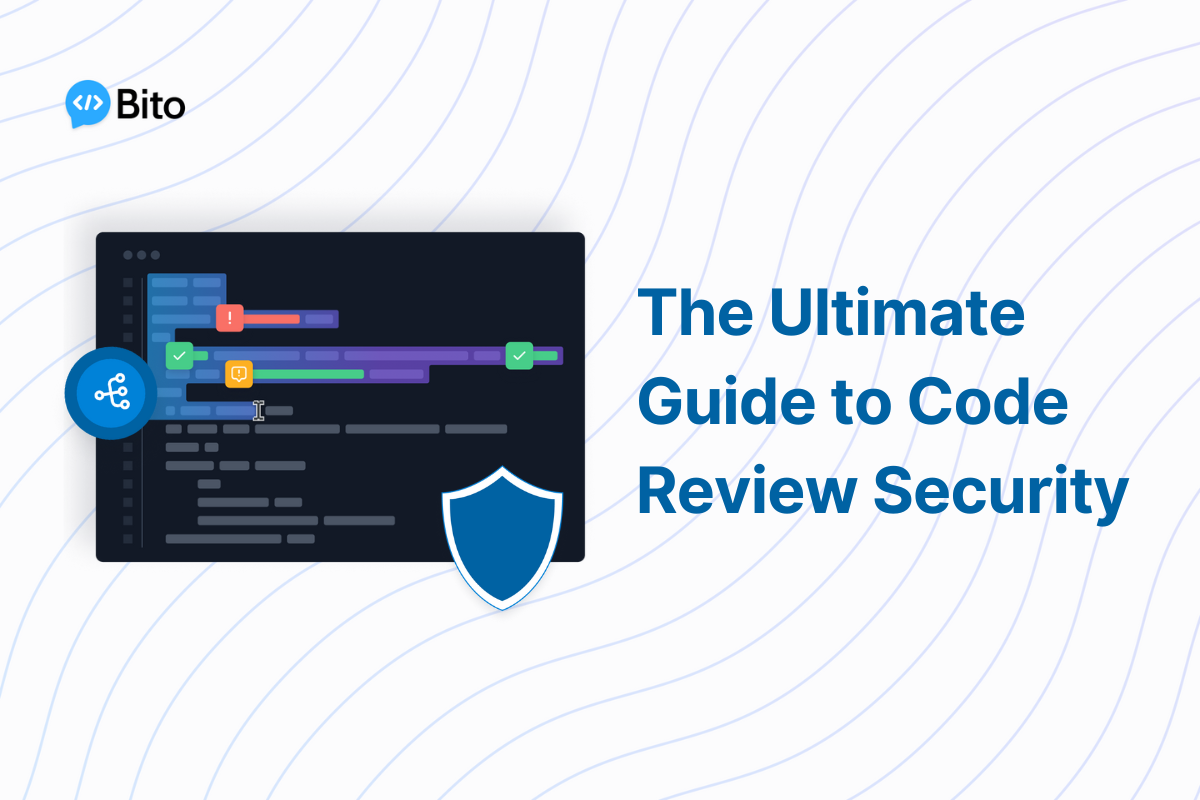Code reviews are a critical part of the software development lifecycle, allowing teams to identify bugs, improve code quality, and mitigate security vulnerabilities before they make it to production. This comprehensive guide will provide developers, engineers, and security professionals with the knowledge, tools, and best practices needed to incorporate security into the code review process.
Understanding Code Review Security
Defining Secure Code Review
Secure code review, also known as security code review, is the practice of manually reviewing application source code with the specific goal of identifying security flaws. This is different from general code review, which focuses on code quality and functionality rather than security. The aim of secure code review is to complement automated security testing tools by leveraging human judgment and expertise to uncover vulnerabilities that tools may miss.
Unlike penetration testing which looks at an application as a black box, secure code review is a white box assessment method. Reviewers are able to see the application’s underlying code to gain a better understanding of its structure and how it really works. This allows them to pinpoint the root causes of vulnerabilities at the source.
Some key benefits of secure code review include:
- Identifying security flaws early in the SDLC before they make it to production.
- Complementing automated testing tools by finding business logic flaws and vulnerabilities unique to app logic.
- Improving overall security posture by encouraging developers to build security into the development process.
- Serving as a cost-effective method of security testing.
- Providing developer training and improving security skills across teams.
Top Code Review Security Issues
OWASP Top 10
The OWASP Top 10 outlines the most critical web application security risks as identified by security experts. Reviewers should have a strong grasp of these risks and be able to spot instances of them in code:
- Injection – Untrusted data sent to an interpreter leading to execution of unintended commands or access to unauthorized data. Examples include SQL, OS command, and LDAP injection.
- Broken Authentication – Flawed authentication mechanisms allowing attackers to compromise user passwords, keys, session tokens, etc.
- Sensitive Data Exposure – Failure to properly protect sensitive data such as financial information, healthcare data, credentials, etc.
- XML External Entities (XXE) – Vulnerabilities allowing attackers to interfere with XML parsers to access unauthorized files or cause denial of service.
- Broken Access Control – Restrictions on what authorized users can access are not properly enforced. Attackers can exploit this to access unauthorized functionality and data.
- Security Misconfiguration – Insecure default configurations, incomplete hardening, unnecessary features enabled, etc. Open doors for attackers.
- Cross-Site Scripting (XSS) – Injection of malicious scripts into a website viewed by other users. Can be used to hijack sessions, deface websites, insert hostile content, etc.
- Insecure Deserialization – Serialized objects used without verification or integrity checking can lead to remote code execution attacks
- Using Components with Known Vulnerabilities – Libraries, frameworks, and components with known vulnerabilities that are not updated open the application to attack.
- Insufficient Logging & Monitoring – Not detecting, responding to, and learning from breaches due to poor logging and monitoring.
MITRE Top 25
The MITRE Top 25 outlines the most dangerous software errors leading to critical vulnerabilities. These should be top of mind for reviewers:
- Input Validation – Lack of input validation/sanitization can allow attackers to insert malicious commands and scripts.
- Out-of-bounds Read/Write – Reading or writing outside intended memory locations allows access to unauthorized memory. Can cause crashes or data leaks.
- Improper Neutralization of Special Elements – Failure to properly encode/escape special elements like quotes, semicolons, angle brackets, etc. can lead to injection flaws.
- Path Traversal – Unrestricted reading of files outside web root directory via manipulating path references. Allows access to sensitive files.
- Cross-Site Scripting – As explained in OWASP Top 10.
- SQL Injection – As explained in OWASP Top 10.
- Missing Authentication for Critical Function – Not requiring authentication for sensitive functions.
- Use of Hard-coded Credentials – Hard-coded passwords/keys in code can be extracted easily by attackers.
- Improper Access Control – As explained in OWASP Top 10.
- Deserialization of Untrusted Data – As explained in OWASP Top 10.
Other common vulnerabilities like buffer overflows, command injection, open redirects, insecure storage of sensitive data, etc. should also be watched for.
Implementing Secure Code Review
Methodology and Frameworks
A defined methodology provides structure, consistency, and efficiency to the code review process. Teams should follow a standardized approach tailored to their needs. Here are some leading secure code review methodologies:
OWASP Code Review Guide – Outlines a phased approach spanning preparation, execution, and follow-up/reporting. Supplemented by extensive reference materials on vulnerabilities.
Microsoft SDL – Part of Microsoft’s Security Development Lifecycle. Focuses on threat modeling, secure design/coding, and validation.
BSIMM – Building Security in Maturity Model – Industry benchmark of software security initiatives mapped to practices across Software Development Lifecycle.
SANS Secure Code Review – Emphasizes identifying coding defects per severity/criticality and developing action plans for remediation.
NIST SP 800-53 – Provides guidelines for conducting security assessments, including architecture reviews, code reviews, penetration testing, and more.
Whichever methodology is chosen, it should cover these key phases:
- Planning – Scoping the code review, identifying target areas, resources required, tools, etc.
- Execution – Performing review using techniques like manual code examination, static/dynamic analysis tools, etc.
- Reporting – Documenting findings, severity, remediation advice, timelines, etc.
- Remediation – Fixing vulnerabilities, re-testing, implementing improvements in the SDLC.
- Follow-up – Periodic reviews to ensure fixes, provide training, improve processes, etc.
Tools and Automation
While manual code review is essential, the use of tools and automation can significantly enhance efficiency and effectiveness. Some popular tools include:
Static Application Security Testing (SAST) – Scan source code for vulnerabilities without executing programs. Examples include Coverity, Checkmarx, Synopsys, Veracode, etc. Help find bugs like injection flaws, authentication issues, memory corruption, etc.
Dynamic Application Security Testing (DAST) – Test applications while running to detect vulnerabilities like XSS, SQLi, path traversal, etc. Popular options are Burp, OWASP ZAP, etc.
Interactive Application Security Testing (IAST) – Combines elements of SAST and DAST. Examples are Contrast Security, Checkmarx IAST, etc.
Code Analysis Tools – Perform deep inspection of code structure, quality, standards compliance, etc. SonarQube, LGTM, Kiuwan, etc. are good options.
Orchestration Tools – Automate and integrate scanning tools into CI/CD pipeline. Examples are Jenkins, GitLab, JFrog Xray, etc.
Prioritization/Risk Analysis – Tools like Kenna, RiskSense, etc. help rank and prioritize vulnerabilities for remediation.
Editor Integrations – Embed security scans into IDEs like Visual Studio Code, Eclipse, IntelliJ, etc. Very handy for developers.
The specific tools used will depend on budget, expertise, existing software delivery pipelines, and review scope. Open source tools are great for small teams, while commercial tools provide enhanced features and support for larger enterprises. The goal is to enable automation where possible so reviewers can focus on higher value manual reviews.
Secure Code Review Best Practices
Code Analysis Techniques
Manual code review is a skill that’s developed over time through hands-on practice. Here are some tips for performing effective analysis:
- Readability First – Ensure code is properly formatted and commented before a detailed review. Refactor if needed.
- Follow the Flow – Trace program execution path while visualizing data flow. Identify trust boundaries, data validation points, authentication checks, etc.
- Understand Attack Surfaces – Analyze exposed interfaces and data inputs from an attacker’s perspective to find weaknesses.
- Isolate Components – Break down code into self-contained units like functions, classes, modules, etc. and review security of each component.
- Inspect Integrations – Review interactions with external components like databases, APIs, libraries, frameworks, etc.
- Compare Implementations – Check against secure coding standards/guidelines like OWASP Top 10 and MITRE Top 25.
- Leverage Tools – Integrate tools into review process for automatic scanning, graphs/visualizations, metrics, etc.
- Document Findings – Maintain detailed notes on vulnerabilities found and how to reproduce them.
Some effective techniques are threat modeling, abuse case testing, and expanding test coverage to include negative cases. The goal is to critically analyze the security of the code from all angles.
Rules and Checklists
Establishing secure coding standards and checklists helps eliminate entire classes of vulnerabilities. Some examples:
- Input Validation – Validate/sanitize all inputs before use. Check data types, lengths, formats, ranges, etc.
- Output Encoding – Properly encode data before outputting to prevent injection attacks.
- Authentication and Authorization – Implement identity verification, role-based access control, principle of least privilege, etc.
- Session Management – Generate secure random session IDs. Implement session timeout, limit sessions per user, etc.
- Error Handling – Handle errors securely. Do not reveal sensitive information. Log errors with tracking numbers.
- Logging – Log access control failures, input validation failures, system events, etc. Do not log sensitive data.
- Cryptography – Use industry standard encryption algorithms and tested implementations. Generate keys securely.
- Data Protection – Only collect required user data. Encrypt and restrict access to sensitive data.
- Third Party Components – Keep all components like libraries, frameworks, etc. up-to-date.
Checklists should be tailored to application type, technologies used, compliance requirements, and organizational needs. They serve as a baseline for reviews.
Conclusion
By leveraging the right methodology, tools, and best practices, teams can integrate security deep into the software development lifecycle through secure code reviews. This results in more resilient code, faster remediation of vulnerabilities, and reduced risk across the application portfolio.
Regular security-focused code reviews complemented by automated scanning and testing tools can dramatically improve the security posture of applications and organizations. The process requires buy-in and participation from both security and development teams. With the will to adopt these best practices however, organizations can release highly secure software and gain a competitive advantage in the marketplace.






